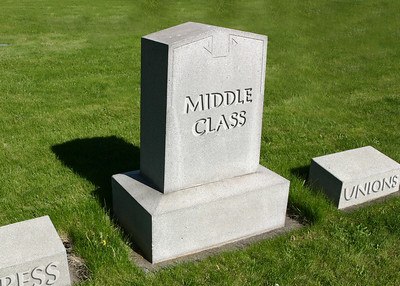According to a 2020 survey conducted by Gallup, nearly three-fourths of Americans consider themselves part of the middle class. Realistically, however, the middle class has been shrinking for decades; only about half of Americans actually fit the middle income definition. That fact is starting to sink in for some. In 2015, a Pew report found that nearly 9 of 10 American’s felt they were part of the middle class. As in 2020, only half of Americans fit the definition in 2015.
Defining the middle class is something of an art. There is no agreed-upon formula or boundary markers for the economic class that so many of us identify ourselves as part of. Being part of the middle class has psychological importance to many people. For them, it signifies economic security. But since the 1970’s, wealth transferred from the middle to the top 10%, and the boundaries of the middle economic tier shifted.
In 2021, Acorns Advisors developed a “middle class calculator.” The tool uses three definitions of middle income to determine where people fall, based on household size and earnings. The calculator also considers a person’s geographic location to account for regional variations in the cost of living.
Using the Pew definition, a single person making $35,000 annually is not considered middle class. Using the Brookings Institution or Urban Institute, the same household is in. For an Ann Arbor household of 4, the middle class begins somewhere between $39,000 and $72,000. At the high end, that means two adults must be making at least $17.31 per hour or one adult must make nearly $35 per hour to be considered middle income.
WCC needs to be a viable pathway to the middle class
This is the implication for the community college. If Washtenaw Community College does not generate graduates who make at least $39,000 per year, that’s a problem. It’s an even bigger problem for single parents and people with larger households. Instead of creating economic opportunity, the college churns out people who cannot access the middle class or cannot access it in a timely way.
So, it’s especially disturbing when the WCC Administration proposes to siphon off tax dollars that voters approved to pay for operations and use it instead to pay off bond debt on buildings we did not authorize and do not need or want. The community college is supposed to be a gateway to the middle class. That works only when the gate is open.
WCC needs to be far more transparent about how much a graduate can expect to make following program completion. But it also needs to review occupational and vocational programs and eliminate ones that do not facilitate a middle income. It needs to create new occupational/vocational programs based on the region’s actual employment needs and that have high-wage potential. Finally, the administration needs to assess each new program and eliminate those that failed to attract students or produce adequate employment and earnings for graduates.
When the WCC administration fails to do this, they fail the community that finances them. We should not subsidize a community college that routinely prepares people for low-wage occupations.
Photo Credit: Donkey Hotey, via Flickr






















